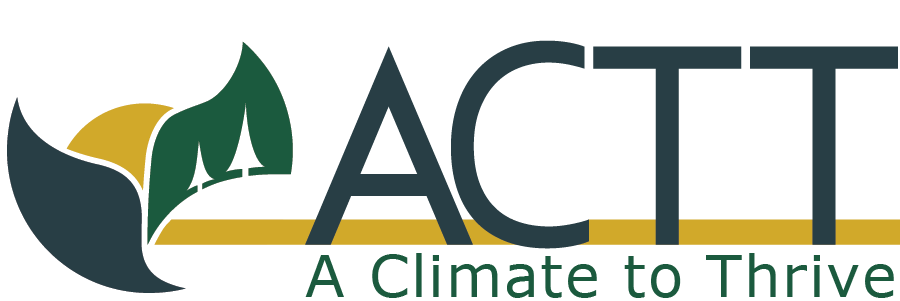About the Toolkit
This toolkit is designed to support communities in taking action to address the changing climate, both through building local resilience to climate-related impacts and through reducing the community’s contribution to climate change. The toolkit is particularly focused on supporting community-driven climate action: action that is developed through and rooted in a high degree of community participation and leadership. While many of the resources within the toolkit are designed with a particular focus on citizen leadership, these resources are also developed to be useful to citizen and municipal groups alike.
Every community will be engaging from a different place and will be navigating a different landscape when it comes to talking about climate change, community understanding of climate science, and support for climate action. “Climate action” can take many different forms and need not be depicted as such. Helping community members improve the insulation of their homes to reduce heating costs is a climate solution, but “climate change” does not need to be discussed for such a solution to take root in a community. Bringing citizens together to discuss impacts related to flooding and increasingly high tides and collaboratively planning to build resilience to these impacts is a climate solution, and, again “climate change” does not necessarily need to be part of the conversation. It is our hope that any community can find themselves in this toolkit and identify useful support. We are working to develop additional resources to support engaging communities that might be starting with a more complex relationship to climate change or climate science. If you have a story to share regarding effective engagement in climate solutions within such a community, please let us know!
The community-driven climate action toolkit was launched in July 2025. We are eager to collect feedback to help improve the toolkit. We have developed a brief survey to collect feedback. Visit the link below if you are interested in providing insight into your experience navigating the toolkit!
Navigating the Toolkit
This toolkit is designed to be flexible; you can move through it sequentially or jump directly to the sections most relevant to your needs. Whether you’re just starting out, looking to build momentum, or working to sustain long-term impact, this resource provides practical guidance to support your efforts.
Note: This toolkit is best viewed on a computer. Mobile access is currently limited, and some features may not display properly on a phone.
Lays the foundation: how to form a group, host initial meetings, define your focus, launch early projects, and more.
Section 2: Building Capacity for Action
Explores essential skills for growing your initiative—strategic planning, budgeting, project organization, and forming initial partnerships.
Covers key considerations for sustaining your group’s efforts, including assessing whether to formalize as a nonprofit, strengthening partnerships, and keeping community members engaged over time.
Section 4: Plug and Play Projects
Step-by-step guides to community climate projects, providing everything you need to adapt and implement these projects in your community. Each example includes templates and best practices.
Browse all the worksheets, tools, and references from Section 1, 2 and 3 of the toolkit, organized here for easy access.
Along with these six aspects, you will also note invitations to “Pause and Reflect” throughout the toolkit. These invitations are deliberately placed at points within processes in which conscious, grounded decision-making is especially important. It can feel odd, or even counterintuitive, to pause and reflect in the course of doing climate work, as action on climate change is so urgently needed and we are facing a rapidly ticking clock. However, we have found the choice to resist the urge to consistently power forward with action without pause to be both important and impactful. We don’t just need action right now, we need action that is thoughtful, even wise, and action that is well-grounded in clear messaging. We need community understanding to power the engagement needed for action to progress impactfully. All of these things take a certain degree of pausing to reflect. In our experience, we are never sorry when we take this time for reflection, particularly collective reflection, and almost always find that it actually accelerates both the speed and impact of the action that follows. Use the “Pause and Reflect” buttons throughout the toolkit to access the reflection guides to support this process.

Learn what makes climate action truly community-driven—and why that changes everything.
Access any step:
Content development: Angie Flores, Johannah Blackman, Naomi Albert. Design: Angie Flores. Last updated: July 2025













